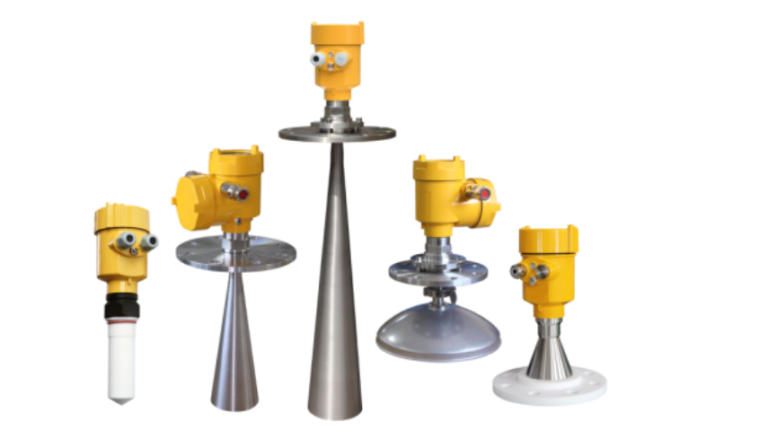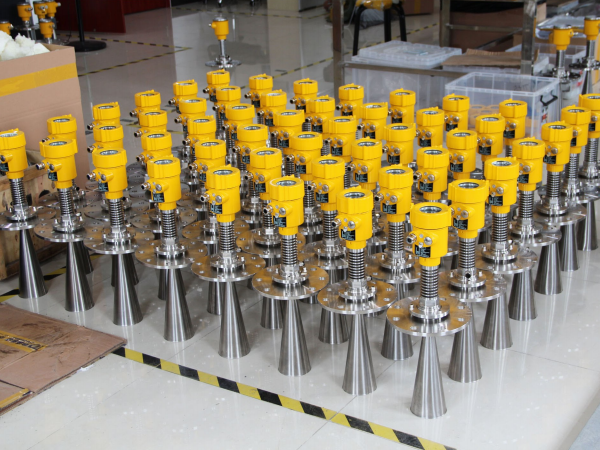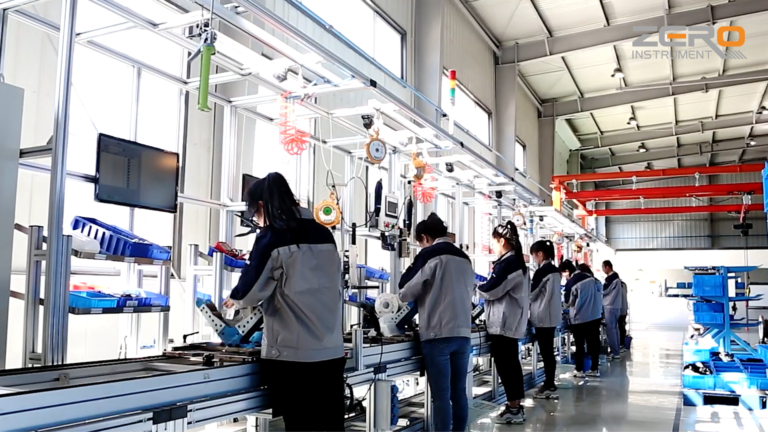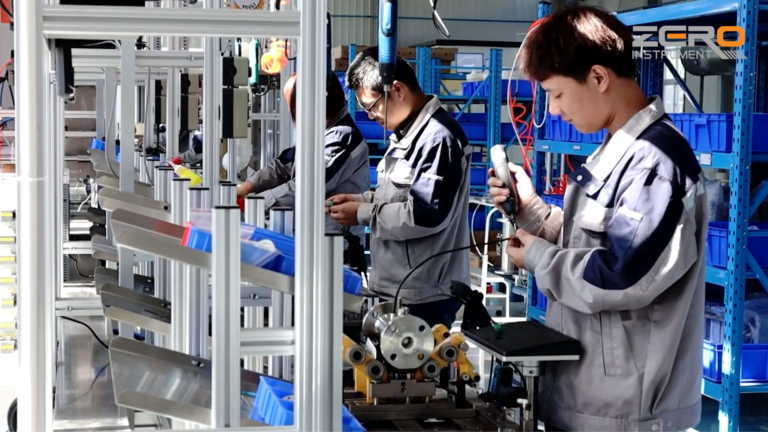Radar level meters, which operate on the principle of electromagnetic wave reflection, are non-contact instruments designed to measure liquid levels by emitting microwave pulses and receiving their reflected signals. The process involves transmitting high-frequency pulses from the radar probe towards the surface of the liquid being measured. When these pulses encounter the liquid’s surface, they are reflected back and captured by the receiver within the instrument. By calculating the time interval between pulse emission and reception, and factoring in the speed of light, the actual level of the material can be accurately determined.

Advantages of Using Radar Level Meters in Discharge Tanks
Radar level meters’ non-contact nature provides significant advantages, particularly in harsh or complex environments like discharge tanks. This method avoids direct contact with the medium, making it ideal for applications involving corrosive, high-temperature, or high-pressure conditions that could otherwise impact measurement accuracy or shorten equipment lifespan.
1. High Measurement Precision: Radar level meters offer exceptional precision, often achieving millimeter-level accuracy. This high degree of precision is crucial for industries where maintaining exact liquid levels is essential, such as in chemical processing and production. In discharge tanks, where precise control of liquid levels ensures process stability, radar level meters excel in providing reliable readings.

2. Strong Interference Suppression: One of the most notable features of radar level meters is their ability to suppress interference signals effectively. This capability ensures the accuracy and reliability of measurements, even in environments with multiple potential sources of interference. For example, in discharge tanks with turbulent surfaces or varied structural components, the radar’s advanced signal processing distinguishes true level signals from false echoes, maintaining consistent accuracy.
3. Versatile Application Range: Radar level meters are suitable for nearly all types of liquids, including those that are corrosive or subject to extreme temperatures. Additionally, their adaptability extends to containers of diverse shapes and sizes, such as spherical, horizontal, or cylindrical tanks. This versatility makes radar level meters an optimal solution for monitoring liquid levels in discharge tanks across various industries.

Case Study: Effective Implementation in a Petrochemical Facility
To illustrate the practical benefits of radar level meters, consider a petrochemical company facing challenges with measuring highly corrosive liquid in their discharge tanks. Traditional measurement instruments were prone to rapid degradation due to the liquid’s aggressive nature, while manual measurement posed significant safety risks to workers.
The company adopted radar level meters to overcome these challenges. After a comprehensive installation process involving precise calibration and testing, the radar meters demonstrated their ability to accurately track liquid level changes. Over time, the measurement results proved to be stable, with minimal deviation. This accuracy not only enhanced operational efficiency and product quality but also significantly reduced maintenance costs and safety hazards.

Future Outlook
With ongoing advancements in industrial automation and smart technologies, the use of radar level meters is expected to expand even further. Their proven reliability, non-contact measurement capability, and robust performance make them a valuable asset for industries requiring accurate liquid level management, including those involving complex and challenging environments like discharge tanks.
In conclusion, the adoption of radar level meters for measuring liquid levels in discharge tanks offers numerous advantages, including high precision, resistance to interference, and versatility in application. As industrial processes continue to evolve, radar level meters are poised to play an increasingly pivotal role in ensuring efficiency, safety, and reliability.
